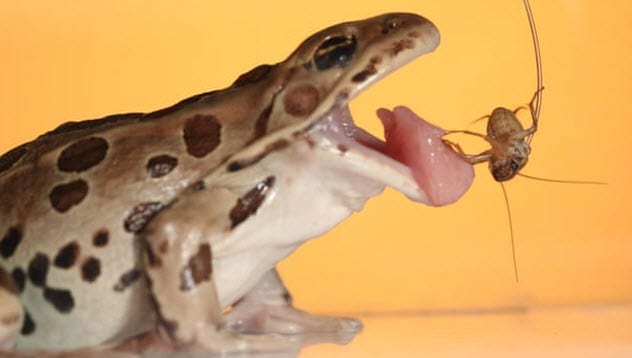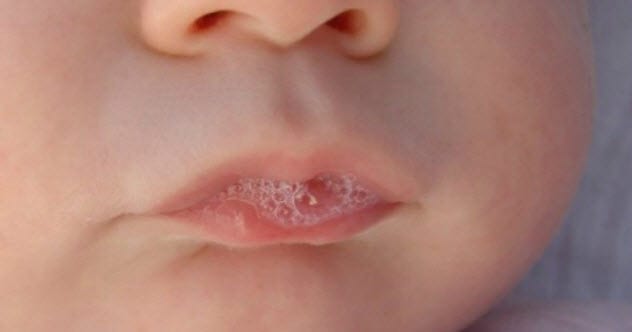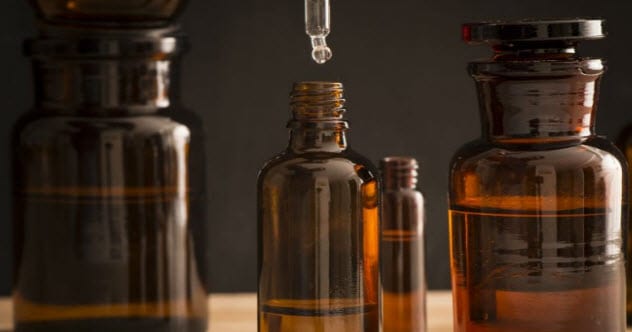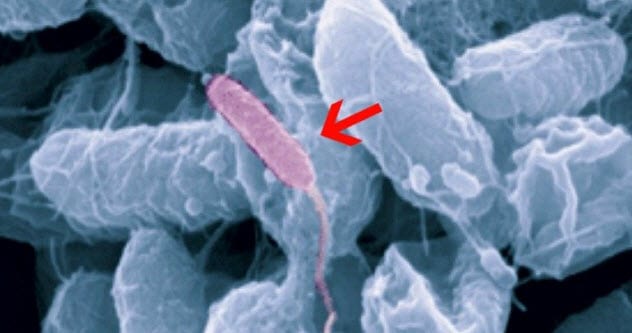 Mysteries
Mysteries  Mysteries
Mysteries  History
History 10 Surprising Stories About the Texas Rangers
 Humans
Humans 10 Philosophers Who Were Driven Mad by Their Own Theories
 Miscellaneous
Miscellaneous 10 Video-Game-Worthy Weapons and Armors from History
 Weird Stuff
Weird Stuff 10 Psychics Who Accurately Predicted Wartime Events
 The Arts
The Arts 10 Pieces of Art Inspired by a Broken Heart
 Health
Health 10 Science Fiction-Sounding New Medical Treatments
 History
History 10 Surprising Facts About the Father of Submarine Warfare
 Space
Space Ten Astonishing New Insights into Alien Worlds
 Weird Stuff
Weird Stuff 10 Bizarre Summer Solstice Rituals Still Practiced Today
 Mysteries
Mysteries Top 10 Haunting Facts About the Ghost Ship MV Alta
 History
History 10 Surprising Stories About the Texas Rangers
 Humans
Humans 10 Philosophers Who Were Driven Mad by Their Own Theories
Who's Behind Listverse?

Jamie Frater
Head Editor
Jamie founded Listverse due to an insatiable desire to share fascinating, obscure, and bizarre facts. He has been a guest speaker on numerous national radio and television stations and is a five time published author.
More About Us Miscellaneous
Miscellaneous 10 Video-Game-Worthy Weapons and Armors from History
 Weird Stuff
Weird Stuff 10 Psychics Who Accurately Predicted Wartime Events
 The Arts
The Arts 10 Pieces of Art Inspired by a Broken Heart
 Health
Health 10 Science Fiction-Sounding New Medical Treatments
 History
History 10 Surprising Facts About the Father of Submarine Warfare
 Space
Space Ten Astonishing New Insights into Alien Worlds
 Weird Stuff
Weird Stuff 10 Bizarre Summer Solstice Rituals Still Practiced Today
Top 10 Things You Never Knew About Saliva
Drool is the forgotten wonder—and sometimes horror—of the human body. This bubbly liquid is a multitasker: transferring hormones, keeping the teeth intact, and even retaining our long-lost ancestors.
The world of spit can get a little weird when doctors use it as a vaccine or modify it to become the world’s most powerful painkiller. In the darkest corner of sputum science, a new and dangerous life-form paddles around in human gob and people make a lucrative trade selling their own diseased samples on the black market.
10 Shape-Shifting Frog Spit

Many cards and cartoons depict frogs snapping up flies with their tongues. The science behind this ability is mind-bending. The amphibians catch insects with a combination of speed, accuracy, and sticky saliva. When a frog spots a tasty tidbit, it whips out a tongue that is 10 times softer than a human’s. This allows it to silkily slap into every nook and cranny of an insect.
As the tongue shoots forward and connects, the saliva is thin. The moment the tongue retracts, the spit turns thicker than honey. Suddenly, the watery liquid that seeped into the prey’s every crevice turns viscous, making frog gob inescapable.[1]
The process is effortless for the amphibians as they are not required to do anything special. Shearing forces from the tongue shooting forward and then whipping back do all the work.
To get more insight into what went on inside the saliva, scientists pointed a rheometer at the mouth samples of 18 frogs. The device measures fluid properties and, in this case, determined that high concentrations of long-chain proteins also contributed to the snotty consistency.
9 Saliva’s Reproductive Role

Philematology is the study of kissing. Scientists who investigate puckered lips found something interesting. It would appear that spit is a crucial ingredient for romance. Well, physical attraction anyway.
From the onset, most people view saliva—especially that sloshing around in other people’s mouths—as the least romantic thing ever. But it plays a stronger role in reproduction than anyone realized.
Researchers turned their attention to college-aged couples, asked them to smooch, and then analyzed their hormones. The lovebirds who just held hands did not experience the same beneficial drop in stress hormones (cortisol) and increased bonding hormones (oxytocin) as those who kissed.[2]
In evolutionary terms, thorough kissing might be a way to influence these hormones, both of which have been identified as key to reproductive success. Prior analysis also found evidence that there is testosterone in spit, the hormone that revs up sex drive.
Philematologists noticed that more men than women enjoy a good, open-mouthed, sloppy kiss. There is a chance that nature designed it this way to transfer testosterone from a man to his partner to get her in the mood.
8 It Cannot Stop Thirst

Many a desert crawler with some education in saliva has thought, “Spit is 98 percent water. Why am I still thirsty?”
Unfortunately for those stuck in the desert and the thirsty guy too lazy to get up and open the fridge, saliva cannot quench thirst. The issue is not water content but concentration. To stay hydrated, cells must absorb fluids that are less concentrated (with salts and solutes) than liquids already present in the body.
Fresh water fits the bill. On the other hand, saliva is so packed with enzymes and proteins that it is far more concentrated than water. When a person only has the option of spit, a vicious cycle soon develops.
It starts with a couple of swallows, but the spit fails to relieve the parched feeling. The body dehydrates, which makes saliva even more concentrated. It might be 98 percent water, but it is not watery enough to sustain life on its own.[3]
7 Dry Mouth Disorder

Some people cannot produce enough saliva. This may not sound like the most dreadful condition out there, but the consequences are on nobody’s wish list. Saliva covers everything inside the mouth with a thin layer, barely a milliliter’s worth, but it plays an important part in oral health.
Without this bubbly liquid, a condition called “dry mouth” develops. Sufferers experience speedy tooth decay and yeast infections among other unsightly oral afflictions.[4]
The protective powers of spit grow from its contents. Around 98 percent water, the rest teems with active ingredients such as mucus, electrolytes, enzymes, and antibacterial elements. Together, their functions serve to break down fats and starches, make swallowing easy, and protect the teeth and gums from acids, bacteria, and microbes.
Spit also has another somewhat remarkable ability. Chewing, jaw clenching, or teeth grinding exerts enormous pressure on teeth. Thanks to saliva’s proteins, teeth slide into each other instead of stabbing directly at the enamel.
It sounds plain, but any engineer knows that high pressure makes lubrication difficult. Spit weathers this challenge with excellence, and without it, teeth would be destroyed in a few years.
6 Alternative To Morphine

The strongest painkillers are opioids, morphine included. Despite the relief that opioids can bring, long-term use often causes resistance, addiction, and death by overdose. Needless to say, a new pill with the strength of morphine but without the side effects has been on scientists’ radar for a long time.
In 2006, a possible replacement—a peptide called opiorphin—was found in human saliva. It boosted the power of enkephalin—an opioid peptide and the body’s own natural painkiller.
In the same way as morphine, enkephalin binds to places on the spine and blocks pain signals to the brain. Since the two peptides are naturally occurring in the body, they do not come with the same dangers as conventional opioids.
However, they had their shortcomings. Opiorphin failed to reach all the places that morphine could. It remained localized, bound to wherever enkephalin was released.
In recent years, a modified version of the saliva peptide was created to overcome this problem. Called STR-324, it showed promise in rats when the compound was injected to control postoperative pain.[5]
5 Cat Gob Vaccine

When officials investigated a Chicago doctor for possible malpractice, they were in for a world of weird. In 2016, they found that Ming Te Lin believed in thinning oral vaccinations with two unnecessary ingredients. One was vodka, probably procured from the local liquor store. How he harvested the second ingredient—feline saliva—remains unknown.
For Lin, this was not a one-time experiment. The doctor had been plying his patients with alcoholic cat spit for over 10 years. The youngest child he doped was seven days old. Lin, an allergist and immunologist, chose vodka and cat saliva because he believed they could treat allergies. None of his patients—or in some cases, their parents—complained.
Lin was only exposed when health care providers noticed that the children’s charts indicated modified versions of childhood vaccinations. Since the US Food and Drug Administration does not favor cat gob, Lin was suspended from the medical field. He also faced serious charges for signing state documents declaring that any shots he gave to underage patients were the conventional kind.[6]
4 Mystery Nonhuman Ancestor

In 2017, scientists dug around spit samples harvested from sub-Saharan Africa. The aim was to study mucin-7, the protein responsible for saliva’s slimy consistency, and the health benefits it offered to humans.
Instead, something weird distracted the researchers. MUC7, the gene behind mucin-7, was radically different from the same gene found in other regions. Around 5–7 percent of each population that lived in sub-Saharan Africa carried this strange variation. In fact, the same gene that existed in Denisovans and Neanderthals, both extinct human branches, were more closely related to modern humans than the sub-Saharan version.
This could only mean one thing. Around 200,000 years ago, the ancestors of modern people found romance in the arms of something not quite human. Tests showed that the latter was even more distantly related to humans than Neanderthals (who were the closest relative to humans alive today).
Although it was clearly another hominid branch, scientists have no clue what they looked like. Until their fossils are found, they have the dubious honor of being the only extinct hominids that continue to exist as, well, spit.[7]
3 The Lyssinum Case

In 2018, the medical world got crabby over a remedy called lyssinum. If one cared to look past the name and study the ingredients, most would drop the bottle. Lyssinum is saliva taken from a rabid dog. Rabies is a disease that spreads through infected saliva and is almost always fatal to people.
The 2018 furor was sparked by a Canadian naturopath’s claims that she used the remedy on a child. The four-year-old boy, known only as Jonah, hid under his school table and growled at people. He had been bitten by a dog in the past, which the naturopath blamed for his behavioral problems.[8]
The remedy allegedly worked, but the incident alarmed conventional doctors. Besides the obvious risk of infection, there is no proof that lyssinum is a safe product or that it even works.
But those fighting rabid dog spit as a cure for growling kids face an uphill battle. The College of Naturopathic Physicians of British Columbia said that the remedy was an acceptable one in this case. The Canadian government did not seem to have a problem with it, either.
2 A New Species

In 2016, researchers discovered a new life-form. It was not an animal in the woods or a fungus on Mars. All this time, a microscopic goober had been hiding in human saliva.
It is not a friendly face, either. If bacteria could scream and run away from a cannibal, this would be it. The unnamed bacterium is the first of its kind—a parasite that preys only on other bacteria.
It was found attached to another strain called Actinomyces odontolyticus. When studied in the laboratory, it hunted down Actinomyces and latched onto its victim’s surface membrane. The parasite harvested the life-giving amino acids it needed but eventually killed Actinomyces.[9]
Scientists are not sure how it reproduces or moves on to its next meal. The most frightening discovery came when its DNA was found in high concentrations in patients with gum problems. It seems like Actinomyces, known to cause gum disease, received one last perk before it passed. The parasite boosted its ability to avoid white blood cells and resist antibiotics. The little horror’s DNA also showed up in people with cystic fibrosis.
1 Illegal Saliva Trade

In South Africa, saliva—specifically, spit that comes from tuberculosis (TB) patients—is a hot item on the black market. Healthy buyers take the vials to health clinics, claiming the sputum as their own.
Once tests confirm that the fluid is TB-positive, the scammer receives a clinic card stating the fact. The card is then used to obtain a disability grant from the department of social development. The temporary grant pays around R1,000 (roughly $75) per month.
Since scammers can milk the system for several months, they do not balk at the vial’s price, which ranges between R50 and R100 (roughly $4 and $8). Both the selling price and grant sound like peanuts, but the trade is thriving in Cape Town’s townships where unemployment and poverty strangle many families.
When someone is diagnosed with TB, they are even less likely to find or maintain work. So they sell their saliva. Such a TB patient-dealer visits a clinic for treatment but really goes there to steal the vials. The easy theft and the clinics that accept bottled spit not produced under supervision are among the reasons why the scam remains rampant.[10]
Read more bizarre facts about saliva and the human mouth on 10 Bizarre Things You Didn’t Know About Saliva and 10 Disgusting Facts About The Human Mouth.








